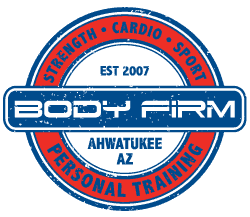We’ve all probably experienced it — sore muscles! If your muscles feel sore a day or two after you work out, hike/walk/bike, or work in the yard, etc., you’re experiencing delayed onset muscle soreness (DOMS). Treating DOMS can be complicated because there’s no surefire cure — and there are varying studies on which methods of recovery work best — but you can help tend to the discomfort of DOMS as it runs its course
DOMS occurs when there are microtears within the muscle that lead to a gradual inflammatory process over the first 24 to 48 hours after an intense workout, according to Tedd Keating, Ph.D., associate professor of kinesiology at Manhattan College. When you do an exercise/movement that you haven’t done before or in a while and/or increase your reps, you’re more likely to experience DOMS.
So…what to do?
Get moving!
One piece of good news is that, in a meta-analysis of nearly 100 studies, active recovery was one of the methods that also seemed to have the most effect on DOMS. Options for active recovery include walking, and stretches that involve consistent movements like yoga, cycling, or light lifting.
Due to something called the “repeated bout effect,” repeating a workout on sore muscles will eventually become easier. However, Denn-Thiele advised that you should be careful about how much you do on those sore muscles. If soreness is greater than a five out of 10 and does not go away with a warmup, he recommends trying a different kind of workout. Foam rolling, too, is a form of self-massage that may temporarily help with soreness because it increases blood flow to the muscles.
Some recovery methods that have shown positive results — professional massage, cold water immersion, etc. — aren’t always practical. So, here’s what you can do at home.
Ice and Heat
There’s conflicting research that ranks ice over heat (and vice versa), and there’s also research that supports both as useful treatment methods. Though some studies found that ice impedes recovery, Dr. Keating said that it can be useful for managing pain. Physical therapist Tyler Denn-Thiele, DPT, CSCS, says heating pads may help with discomfort temporarily as well. And as physical therapist Karen Litzy, DPT, said, “If it makes you feel good, by all means, go for it.”
Remedies in Your Kitchen
Litzy and Dr. Keating pointed to tart cherry juice as a means to minimize muscle soreness, as indicated in some small studies. Litzy added that drinking protein-rich chocolate milk after exercise has shown promising results based on a small study. The active ingredient in turmeric, curcumin, has a moderate impact on improving soreness. Nutrition is key here, so make sure you’re eating a balanced diet of enough protein and carbs and drinking a generous amount of water.
